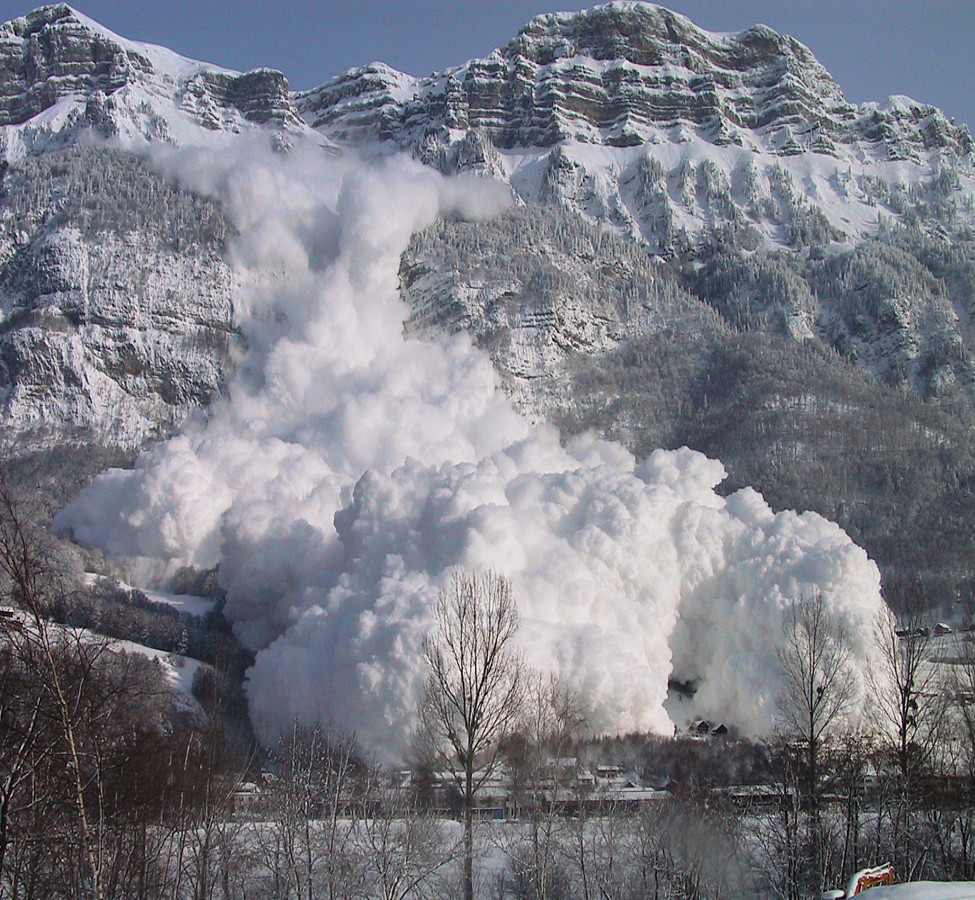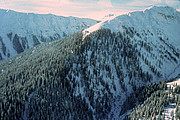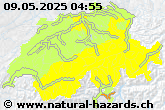Protective forest
Mountain forest provides effective, low-cost protection against triggering of avalanches and against other natural hazards.
Avalanche
Some of the falling snow is caught in the treetops. It then sublimates directly into the atmosphere or falls to the ground in lumps or drops. Homogeneous, uniform stratification is prevented. Tree trunks and wood debris lying on the ground increase the rugosity and hold the snow cover down. The temperature differences in the forest are lower than in the open due to reduced sunlight and wind, making the formation of deep older layers which are dangerously weak less likely.
Rockfall
A dense forest slows down falling stones and boulders.
Landslide
The intertwined roots of the vegetation consolidate the soil down to a depth of about 2 m. Natural cover also regulates the water balance.
Debris flow
Regulation of the water balance results in moderation of peak flows. The banks of mountain streams in the forested area are densely planted and generally well rooted and more stable. Because less material is washed away from the banks, the stream has a smaller bed load. Debris flows are less frequent and violent. A disadvantage is that trees can fall into the channel thereby increasing the risk through log jams.




